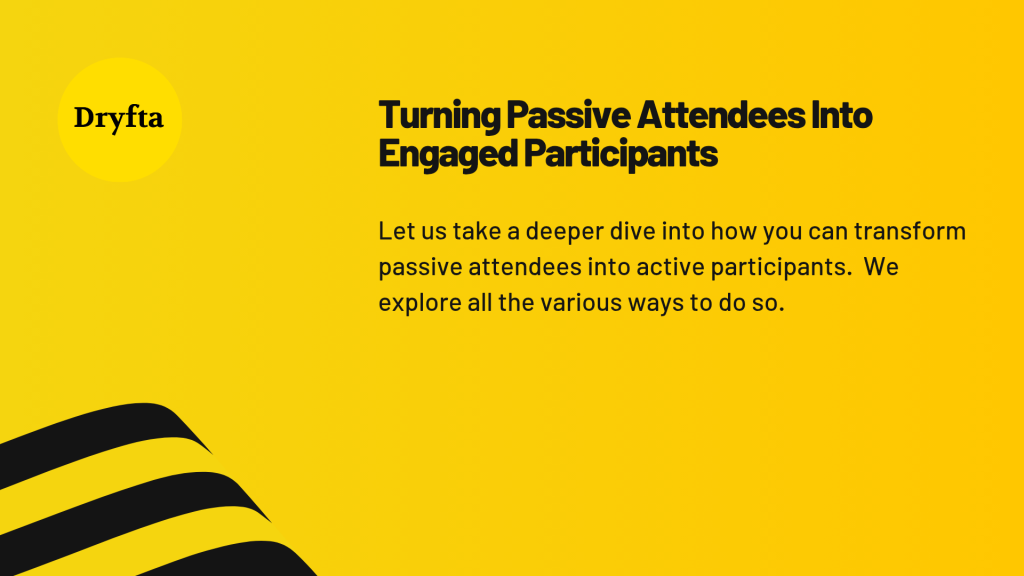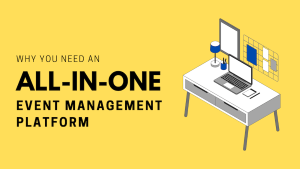
Getting attendees to engage during an event is not as simple as it sounds. It takes a humongous amount of effort to plan and organize an academic event that retains the attention of the attendees from start to end. This can be done through polls, questions and answers, live chat sessions, and more. The goal is to make participation less effortless and more rewarding.
Let us explore various ways to transform passive attendees into active ones through these event platforms. We will study the processes, efficient strategies, and methods to achieve this.
Understanding Passive vs Active Attendees
Passive attendees take part in the session, but they do not engage actively. They observe, take notes, and eventually leave. Whereas active attendees ask questions, network among the other attendees, and shape discussions. The difference lies in involvement, and that determines the entire outcome of the event.
Active engagement can also lead to growth and a more meaningful experience. Passive attendees, in contrast, record limited feedback and a lower satisfaction level.
Event platforms bridge this gap by making engagement easy. From discussion boards to networking and live polls, these tools empower attendees to participate.
Why Do Event Management Systems Drive Better Engagement?
Interaction can happen across all touchpoints. The event platform brings all these interactions into one unified structure. This creates a more seamless and connected experience.
Begin by centralizing all event details to make information easy to find and minimize confusion through clear scheduling. Add interactive elements such as Q&A sessions, live chats, and polls to encourage real-time participation. Conclude the experience with access to recorded sessions and follow-up polls to keep the engagement going even after the event has ended.
Interactive Features that Spark Attendee Participation
The features of event management platforms are the driving force behind effective attendee engagement. The right features can shape the attendees’ perspective, and they can turn a passive attendee into an active one.
Live Polls and Surveys: Quick feedback tools help the attendees share opinions and feedback as well as reviews instantly.
Gamification: Points and leader boards turn interaction into motivation. Completing profiles, visiting exhibitors, or joining sessions becomes more fun.
Q&A sessions: Question and answer sessions foster a sense of inclusion. When attendees ask questions or share their responses, it significantly contributes to the event.
Push Notification: A timely reminder is beneficial to remind the attendees about the sessions and meetings.
Smart Networking: One-on-one meetings can help strengthen a network better.
Strategies to Encourage Attendee Interaction
Not only technology but engagement also depends on how it is encouraged. Here are some proven strategies to boost participation:
Pre-event: Start building the excitement early, which can be done by marketing as well. Encourage the attendees to roam around the event site a bit longer and take part in conversations.
During the event: Focus on keeping the energy level the same throughout. You can give shoutouts to active participants, feature the most interactive sessions, and use live polls.
Post-event: Do not let the interaction end when the event does; keep the platform active through post-event surveys, session recordings, and open discussion threads.
Using Analytics to Improve Attendee Participation
Every tap, click, and comment can lead to more engagement. It is one of the ways to see valuable insights. Analytics help in understanding what drives participation and what does not.
By tracking the sessions, one can understand which sessions are bringing in more engagement, which polls get the highest response rates, and how attendees interact with content. Hence, improve on these aspects when moving forward.
Real-time analytics can ensure quick fixes, for instance, if the engagement drops during a session, organizers can send notifications, polls, or discussion panels to re-engage attendees.
Lastly, with data-driven insights, the event planner moves from assumption to action, refining their approach with every event they host moving forward.
Choose Dryfta for Your Event Engagement
Dryfta stands out for its ability to seamlessly blend engagement, analytics, and management into one unified system. Designed for hybrid, academic, and scientific events alike, Dryfta empowers organizers to create a meaningful attendee experience. It is an all-in-one management platform that makes scheduling an event much easier.
Unified event app: Dryfta’s user-friendly interface gives attendees full access to schedules, chat, polls, and resources in an all-in-one interface.
Real-time engagement: Dryfta includes built-in Q&A sessions, polling, and a feedback process. This creates an atmosphere that is collaborative and vibrant.
Gamification of events: Build excitement among attendees through customizable leaderboards, points, and activity challenges that are rewarding to the attendees.
Detailed engagement insights: Dryfta’s analytical dashboard captures and visualizes participation data, helping organizers plan a better and seamless event.
End-to-end event management: From registration and ticketing to abstract submissions and post-event surveys, Dryfta combines event logistics with engagement tools, ensuring a smooth, connected experience throughout.
The Takeaway
An efficient event management platform encourages every attendee to actively take part in discussions and interactions. Dryfta is one of the leading academic conference software platforms that helps in this process and makes events more memorable for the attendees. It streamlines the overall journey of conducting an academic event while keeping attendee engagement at the forefront.




